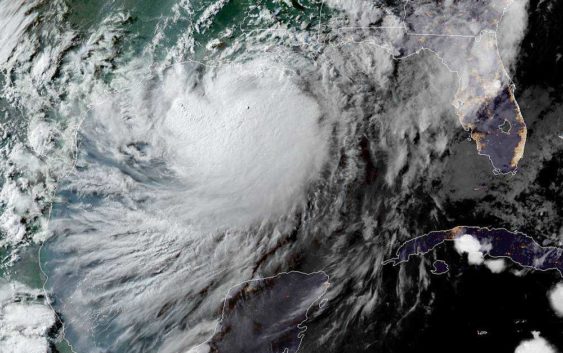- Tropical Storm Sara threatens to bring flash floods and mudslides to Central America
- Hurricane-stricken Tampa Bay Rays to play 2025 season at Yankees' spring training field in Tampa
- Utah scores 3 goals in 2 1/2 minutes in 3rd, Vejmelka has 49 saves in 4-1 win over Hurricanes
- Driver dies after crashing off hurricane-damaged highway in North Carolina
- Body buried in North Carolina carried to Tennessee by Hurricane Helene floodwaters
Scientists predict 'above average' hurricane season in 2021

Hurricane experts shared their predictions on April 8 for what is expected to be a “well above average” hurricane season this year.
Dr. Phil Klotzbach presented his team’s research this morning at the National Tropical Weather Conference, where he announced a prediction of 17 named storms during the 2021 Atlantic hurricane season.
Klotzbach broke down the 17 named storms, which he considers a “well above average” hurricane season, predicting eight will become hurricanes and four will be classified as major hurricanes. A major hurricane is classified as at least a category 3, with wind speeds of at least 111 mph.
Klotzbach also explained factors that led to their prediction. One factor is due to the measurement of wind shear, a change in wind direction along with a change in height in the atmosphere, something Klotzbach says can basically “tear apart hurricanes.” According to Klotzbach, during a La Niña event, there less vertical shear presented in the atmosphere.
RELATED: Part-goat pit, part-moonshine distillery: Diving into the history of Boerne’s Cave Without A Name
Currently, we are in a continued pattern of La Nina, which may contribute to a more severe weather season, according to NOAA. During El Niño there is also typically a less active hurricane season.
Klotzbach also said that 2021 will produce warmer than normal waters in the Tropics and the North Atlantic during hurricane season. This is another important factor as warmer water is needed for hurricane development.
This latest forecast by Klotzbach’s team was released by the Colorado State University Tropical Weather & Climate Research.
READ MORE: Texas DPS implements ‘no refusal’ policy for DWI tests during Strawberry Festival weekend
Teresa Velasco is a digital producer for MySA and the San Antonio Express-News. She has a bachelor’s degree in broadcast meteorology. She uses data provided by the National Center for Atmospheric Research, the National Oceanic and Atmospheric Administration and others for her forecasts.